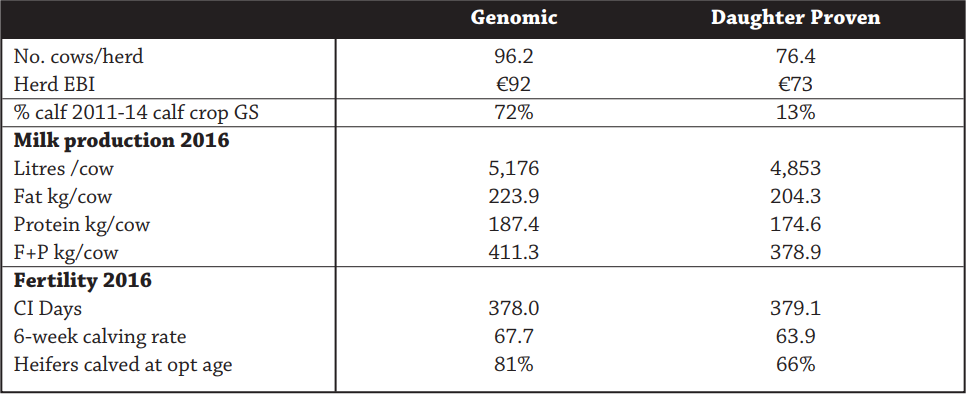Some recent commentary has suggested that using daughter proven bulls is more profitable than using genomic bulls. This is certainly not the case when we analyse the data from Irish commercial dairy herds! The data is clearly showing that progeny from genomic sires are performing some 3 days better in calving interval, 5% better in survival and 34kg more milk solids when compared to proven sires.
Analysis earlier this year undertaken by ICBF and Teagasc established what difference exists between the progeny of the high EBI Genomically Selected (GS) bulls compared to the high EBI Daughter Proven (DP) bulls, based on performance of their progeny on commercial dairy farms. The analysis was based on 33,577 females calves born during 2012 from 14 AI bulls.

Looking at data from Table 1 clearly indicates that the progeny of the high EBI GS bulls had significantly better milk solids and fertility performance, compared to the progeny of the high EBI DP bulls. Indeed looking at the differences in actual performance across the first three lactations (some 3 days in calving interval, 5% in survival and 34 kg F+P), more than confirms the estimate taken from the EBI of €50/lactation. This analysis based on actual daughter performance confirms completely the value of using genomics to help farmers more quickly identify the most superior genetics for delivering increased profitability at farm level.

Looking at data from Table 2 clearly indicates that herds that are primarily using genomics bulls (for these herds 72% of their AI-bred dairy female calf crop born from 2011 to 2014 were to young GS bulls) have significantly better EBI (+€19), milk solids (+33 kg F+P) and female fertility performance (3.8% in terms of 6-week calving) compared to herds that are primarily using daughter proven bulls (only 13% of their comparable calf crop were to GS bulls).
These results are based on 2016 performance only, as these are the cows that will have formed the basis of the herd from the four years of calf crop, 2011 to 2014. The differences presented in Table 2 clearly challenge any suggestion that farmers looking to manage risk in their breeding programme should revert to using daughter proven bulls.
Young GS bulls are higher in terms of EBI (in theory they are 3-4 years ahead of the daughter proven bulls – which is reflected in the difference in EBI between the groups of herds) and as a result should continue to form the core of our National (and individual herd) breeding programmes in the future.
For more detail on the tables behind this text, please click here on presentation button below.

Teagasc National Dairy Conference Paper reference pages 36-43
